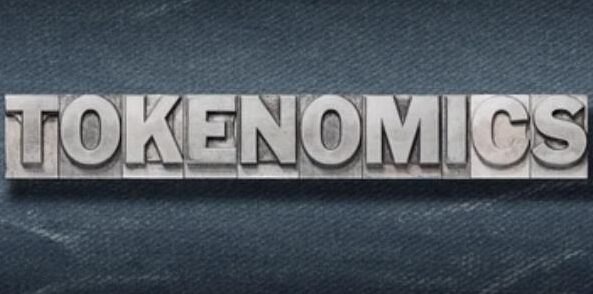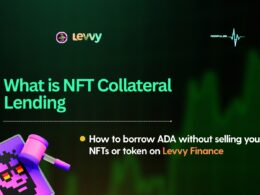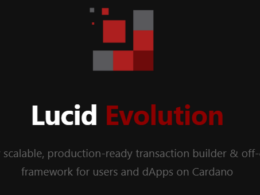Chances are, you have encountered the term “tokenomics” if you’ve come across cryptocurrencies such as Bitcoin or Ethereum. But what does this mean? Why is this so important? In this article, we explore what tokenomics is, types of tokens, and why it is significant for crypto projects in general.
What is Tokenomics?
Imagine playing a video game and in that video game, there are certain coins with which one can buy items, upgrade characters, or unlock new levels. The coins, in that small world, have value. Now, considering digital money in the case of cryptocurrencies, tokenomics is simply understanding how that money is created, and used, and what gives it value.
In other words, tokenomics is the rulebook that dictates how a cryptocurrency works. It addresses issues such as:
- How many tokens are in circulation?
- How does the creation of new tokens come about?
- How are they used or spent?
Tokenomics, for instance, can be likened to the rules that determine the number of points a gamer should get for completing a level in a game, where or how he can spend those points, and if more points could be created.
The word “tokenomics” is a combination of “token” and “economics.” It’s a term used to describe the economics behind a cryptocurrency or blockchain-based project.
The Building Blocks of Tokenomics
- Demand and Supply
In any game, the rare items possess more value. In the crypto world, it is the same rule: if many people want a certain token and there are not many available, then that token will be more valuable. This is the simple meaning of demand and supply. If some project issues a limited number of tokens and this project becomes popular and more people desire to be an owner of such tokens, then the value of the tokens can increase.
The supply of a token can be divided into two segments, namely :
- Total Supply: The maximum number of tokens that will ever exist for a project. This number can be fixed or changed over time based on inflation or deflation.
- Circulating Supply: The total amount of coins that are currently available and are being traded.
- Utility
The worth of a token is not merely based on its scarcity; it is also determined by the purpose it serves. If a token can be used to buy something, pay fees, access different features, participate in decision-making for a project’s future direction, such a token has a utility. The more useful a token is, the higher the value it would have. Any good project will clearly describe how their tokens can be utilized.
- Distribution
Distribution is essentially how the tokens would be given out to early adopters, the team, or even sold in order to raise funds. Fair distribution would mean no single group holds a lion’s share of the tokens in order to reduce the chances of manipulation.
Tokens can be distributed in various ways: mining solutions of complex puzzles get tokens as rewards, staking, or airdrops for free tokens to create awareness. Some tokens also have lockups that ensure they are made gradually available; otherwise, too many tokens would flood the market, crashing the price.
- Inflation and Deflation
Crypto projects can create (mint) new coins or destroy (burn) the already existing ones in the same way countries can print new money or take it out of circulation
The constant increase of new coins is referred to as inflation and it reduces the value of the token. In contrast to this, Deflation occurs when coins/ tokens are burned and its supply is reduced over time which can lead to the increase of the token’s price. Some tokens are designed to be inflationary, while others are designed to be deflationary.
- Incentives
Incentives are benefits provided to people for their participation or support given to the crypto project. Examples may include additional tokens to people that have held tokens for a very long time, rewards for using the platform—just to name a couple. A healthy incentive structure may attract more people to the project and raise the demand for, and eventually the price of the token.
Types of Tokens
Let’s explore some common types you might hear about:

1. Utility Tokens
A utility token offers some specific benefits within a certain project. You can consider them as “tickets” or “vouchers” giving the right to use some features of a blockchain project. For instance, they can be used to purchase services or advanced materials or even for the next level of a game. They are aimed at developing and maintaining a healthy ecosystem in the platform, thereby enhancing the usefulness of the platform for the members.
2. Security Tokens
Imagine security tokens being some form of digital shares in a project. If you own them, in a way, you own part of the project. Like traditional securities, for example, stocks and bonds, these tokens come under regulations and should necessarily comply with local laws, making them different from other types of tokens. They normally give the holder some benefits, like receiving dividends—a portion of the profits.
3. Governance Tokens
Governance tokens provide the right to vote on changes in a project. The holders can have a say in where the project will go. The more governance tokens one owns, the more weighted their vote will be. In fact, the primary aim of governance tokens is to make sure that decisions are taken more for the interests of the community instead of a selected few.
How Does Tokenomics Impact a Crypto Project?
A major factor for the success or failure of a cryptocurrency is its tokenomics. If the rules are good, then the token (or coin) will be stable and look attractive for people to buy and use. But bad rules can make the token lose its value quickly, causing people to lose interest in it.
Put it in the context of a game again, one in which too many points are given out. Soon, those points won’t feel valuable because everyone has them. On the other hand, if those points are hard to get, well, people will just stop playing the game altogether. The same thing happens with cryptocurrencies.
Moreover, if the tokenomics is set in such a way to reward participants and build up community engagement, more people will be encouraged to get involved. A strong community can drive a project’s success.
In short, good tokenomics keeps the balance between supply (how many tokens exist) and demand (how much people want them) and this, in turn, maintains the value of the token. It also attracts more investors because people feel safe knowing that the supply won’t suddenly double overnight and make them lose their money.
Different Tokenomics Models
There is no one-size-fits-all approach to tokenomics. There are various models that can be put into use according to what a project aims for.
- Fixed Supply Model: A model in which only a certain amount of tokens will exist in the supply chain, such as 21 million Bitcoins. This basically forms some sort of scarcity that could result in higher value over time.
- Dynamic Supply Model: In this model, supply will alter in some conditions. This can be done either by increasing the total number of tokens to reward users or by decreasing them so every token is more valuable.
- Hybrid Model: Some projects combine fixed and dynamic models: they have a fixed supply but burn part of the tokens under certain conditions, enhancing the value of the rest.
Tokenomics Examples: How Projects Use Tokenomics
1. Bitcoin: The First and Most Famous

Bitcoin’s total supply of 21 million has been hard-coded into its underlying software architecture. To further boost its deflationary tendencies, a “halving” event occurs every four years, in which the amount of new Bitcoins paid out in block rewards get chopped down by half. The reward for mining diminishes with time, and ultimately, the supply is reduced too; hence, the available Bitcoins become scarce and, as a result, valuable.
2. Ethereum: Utility and Flexibility

The Ether (ETH) token serves as the transaction bedrock of the Ethereum network. While Ethereum does not have a capped supply of tokens, inflationary controls like burning a portion of newly created ETHs have been put in place to checkmate infinite supply.
3. Cardano: Governance and Sustainability

Cardano has a very unique governance system. Its ADA tokens give holders the right to vote on changes to the network. It also funds itself by setting aside a portion of each transaction fee in a treasury to support development. It has a capped supply of 45 billion coins, of which approximately 31 billion are in circulation today.
Future Trends in Tokenomics
As we move more into the digital era, the adoption and usage of tokenomics is also evolving. Within this context, it is vital to check the following trends that are likely to emerge in the near future.

- Tokenized Physical Assets: Tokenization of real-world commodities and services such as properties, paintings, or even stocks will greatly increase in the future. People will be able to trade parts of these assets without much hassle.
- Decentralized Governance: In the future, we might see more decentralized governance models, where token holders can vote on everything from technical upgrades to partnerships. This makes the community more involved in the direction of a project and decisions more transparent.
- Programmable Tokens: Now imagine tokens that, unto themselves, can be designed to follow rules. For example, a token could be programmed to automatically distribute rewards when a project completes some milestone. Programmable tokens could help with complex projects.
- Cross-Chain Tokens: For now, most tokens reside on a specific blockchain. In the future, more cross-chain tokens, which can be moved and used with ease across platforms and blockchains without converting them, may also become a possibility.
Final Thoughts
At first, it might be confusing, but tokenomics is among the most important things to understand if you really want to get involved in crypto. If anything, tokenomics is the backbone of any cryptocurrency project. Good tokenomics means that a project is well-designed and likely to succeed. Poor tokenomics? That’s a red flag that the project might not have a bright future.
So, if you want to make better decisions in the crypto world, taking the time to understand tokenomics is totally worth it. As the crypto world grows, tokenomics will continue to play a critical role. Whether you’re investing, trading, or just curious, having this knowledge can help you navigate the exciting, and sometimes confusing, world of digital assets and avoid projects that might not be sustainable or that have poor value.










